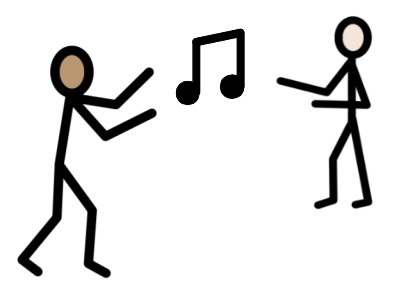Rhythmic Relating in autism is a new approach to play and social timing – supporting friendship, learning and therapy.
Laboratory for Innovation in Autism, Strathclyde University, UK & the Rapport-Based Communication team have just published an accessible guide with bite-sized learning sections and video examples. Pick up your copy for free here:
A handbook for Rhythmic Relating in autism (Frontiers in Pediatric Psychology)
When playing and communicating, often autistic and non-autistic people differ in their sense of social timing. Important relationships can be out of sync. Non-autistic people can bring extra clarity and impetus into their way of communicating to help. Using sounds and movements with extra vitality, rhythmic elements, and a focus on rapport in playful communication, non-autistic people can piggyback on autistic strengths to bring supported levels of social timing into relationship. In this way, Rhythmic Relating helps people play together by giving them a just-ahead-in time felt sense of each other’s actions and intentions.
Rhythmic Relating uses super-simple techniques, no musical skill or ability is required! The approach has been developed to support your creative practice and sense of fun in playful interaction with young autistic children, unconventional communicators and autistic people with additional learning needs. Rhythmic Relating is offered as a foundation for interaction and learning, for school staff, for Occupational Therapists, Speech Therapists and Physiotherapists, and can also provide a basis for tailoring creative interactive therapies when working with autistic clients.
Charles Darwin suggested that rhythm is an evolutionarily ancient human capacity and is at the root of how we interact and learn language. Getting a bit more up to date, myself and a team of researchers, therapists, and composers have been taking a deep look at the current developmental psychology and neuroscience of rhythm, movement, and autism. We explored how most people on the autism spectrum can track and hear a beat, are sensitive and open to a world of sensitively chosen sounds, and often love rhythm in many forms. We looked at ways in which we could add rhythmic elements to our interactive behaviour to support social timing when playfully interacting with someone diagnosed with autism. We have come up with a skill-set for practitioners: Rhythmic Relating.
